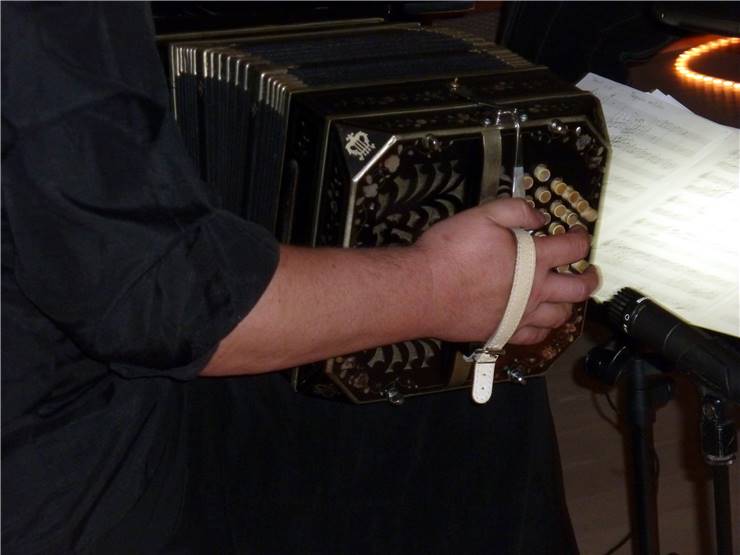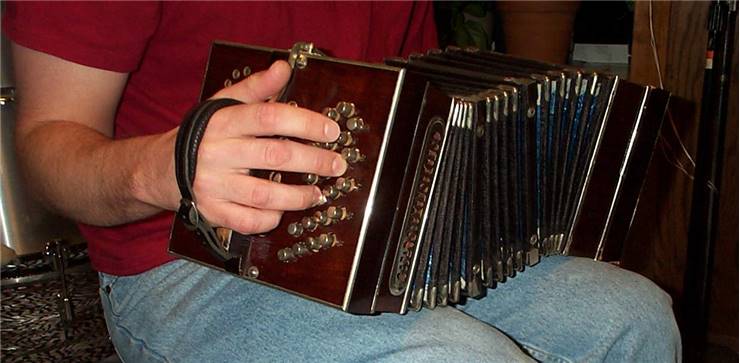Bandoneon - Definition, History and Construction
The bandoneon is a type of concertina (free-reed musical instruments that looks like a miniaturized accordion, with a user accessible keys and switches on both sides of the device) that has originated in Germany but have managed to attract great popularity in countries such as Argentina, Uruguay, and Lithuania Bandoneons are bellows-driven free reed instruments, and as such, they are also a part of instrument category that is often called “squeezeboxes”. In Argentina and Uruguay, this instrument is closely tied to the history of tango music and tango dance, while Lithuania has adopted bandoneon for use in their folk music ensembles. The use of bandoneon in 20th century Argentine was successfully promoted by bandleader Aníbal Troilo during his band’s 1939-1944 career. The bandoneon player in this band was not Troilo, but a talented Astor Piazzolla who is today remembered as one of the key figures that managed to transform tango music into its new style that was called nuevo tango.
While the bandoneon regains the basic shape of other accordions, it does not feature the full ability to produce “chromatic” and “diatonic” (also known as non-chromatic or bi-sonorous) sounds via chord buttons or keys. Chromatic sound (which is rare in bandoneons) means that same sound can be created no matter if bellows are opening or closing, while non-chromatic sound produces a different sound when bellows are opening or closing. Argentine tango music players are almost fully focused on non-chromatic bandoneons, which enable them to expand their musical possibilities with varying amount of dissonances and assonances depending on how they are handling their bellows.
Bandoneon differs from other concertinas and accordions by having almost perfect square shapes, with some models having rounded edges or six-sided boxes. The process of sound generation is same as in concertina - bandoneon is played with both hands, with finger keys controlling the opening of free metallic reeds, while the movement of the hands creates air pressure captured in the central bellows of the device. The right side of the bandoneon features treble sounds, while left one the bass notes set at one octave lower. In modern times, this instrument comes in two button combinations. 64-tone bandoneons have 32 keys (17 on the right and 15 on the left), while 88-tone bandoneons have 44 keys (23 on the right and 21 on the left), with all of the keys producing different sound depending on whether bellows is expanding or contracting.
Like a concertina, it can only produce individual sounds. It is small, portable, but it is not the easiest instrument someone can learn to play.
Bandoneon History
The origin of the bandoneon can be traced to the mid-19th century Germany where instrument inventor and dealer Heinrich Band (1821–1860) created the first version of this instrument. Born as a son of musical instrument dealers (he also had 15 siblings), he quickly showed his predisposition for building instruments, playing cello, accordions, and trade. He professionally played concertina (known in Germany as Konzertina) but was frustrated with the limitations of this instrument. This pushed him to create a more advanced version that could be integrated into the new wave of German folk, popular and religious music. Around 10 years after his death, many German settlers immigrated to the New World, bringing their home traditions and musical instruments with them. This enabled bandoneon to get a firm hold in South America, where many German immigrants settled in the port cities such as Buenos Aires and Montevideo. There, bandoneon becomes one of the cornerstones of the newly developed musical and dancing genre of Tango, which was an evolution of the numerous musical influences in the Argentina and Uruguay, most notably folk music style of the milonga.
Forever linked with Tango music, Bandoneon remains in use today
Curiously, even though Argentina become the largest home of bandoneons in the world, this instrument was never produced anywhere else than in its home country of Germany. By the year of 1930, German manufacturers of this instrument created more than 25 thousand bandoneons only for Argentine market.
Tango Bandoneon
The most common type of bandoneon that is used in tango music (either in smaller or larger bands) uses a 71 button format which can produce two sounds for each button depending on whether the bellows is expanding or contracting.
Tango bandoneon keyboard is based on the standardized layout known as “Rheinische Lage“ introduced by German instrument makers in the 19th century, but with the added presence of six additional buttons that are used almost exclusively by the tango musicians. This enhanced layout bears a close resemblance as those found in German or Anglo concertina instrument.
As for the range of tango bandoneon, it covers just under five octaves from the C two octaves below middle C, thus enabling tango musicians to easily play all tango melodies.
The vast majority of tango bandoneons were created in Germany and were exclusively exported only to Argentina and Uruguay ever since 1911. Bandoneon models that are intended for use in Germany (and other markets where this instrument is used in folk music) feature different button formats.
How to Play Bandoneon
It is not strange that Bandoneon and other instruments in the family of concertina are called “squeezeboxes”. To play them, you need to hold it with both hands, and perform constant pushing and pulling motions that will create pressure and movement of air in its bellows. The air can enter or leave bellows only when player pressed one or more buttons on either (or both) sides of the bandoneon, which is when the sound is created.
While accordions have buttons that travel perpendicular to the movement of the bellows, bandoneons have buttons that travel parallel to the bellows (they can be pushed towards the bellows). Another big difference between accordion or piano and a bandoneon is that this tango music instrument creates a different sound when sound is moving in and out of the bellows. This means that player needs to time expansion and contraction of the bellows depending on what sounds he wishes to create with each key press. This effect is called bisonoric sound and is especially difficult to master on bandoneon since the player needs to learn four different layouts of sounds (two on the right, and two on the left-hand keys).

It is important to note that bandoneon keys are not suitable for playing scale passages of single notes but is instead focused on facilitating playing chords that are supporting other instruments or singers of tango music.
Bandoneon Musicians
While bandoneon can be played in many types of musical styles (such as religious music, folk music, etc.), this instrument is best known for being one of the cornerstones of tango music. It was promoted to this state not only by early influences in Buenos Aires and Montevideo when tango music style was being formed but also by modern composers such as Aníbal Troilo and Ástor Piazzolla. Piazzolla was especially successful in integrating bandoneon into modern tango style, managing to mix tango music with classical music, and thus transforming traditional tango into a new genre of nuevo tango.
Here are only some of the notable bandoneon tango music players:
- Ástor Piazzolla
- Aníbal Troilo
- Eduardo Arolas
- Pedro Maffia
- Pedro Laurenz
- Richard Galliano
- Gabriel Merlino
- Per Arne Glorvigen
- and many others
Bandoneon Construction
Bandoneons do not differ much from regular constantinas, with the largest differentiator being its ability to produce bisonoric sound with the air passing through multiple reeds when traveling through the hand portion of the device (either the treble or bass side). During the construction, manufacturers focus on creating efficient bellows, reedpan (for channeling the airflow) and buttons.
Bandoneon Manufactures
Some of the most notable bandoneon manufacturers of early 20th century were: Ernest Louis Arnold (1828-1910) who produced brands “ELA” and “Premier”, Mathis Hohner (“Germania”, “Tango”, “La Tosca”, “El Pentagrama”, “Cardenal”), Alfred Arnold (“A-A” and “America”) and Mainer and Herold (3B). Brazilian manufacturer Danielson tried to produce bandoneon, but they did not have success exporting it to other Latin American countries.
